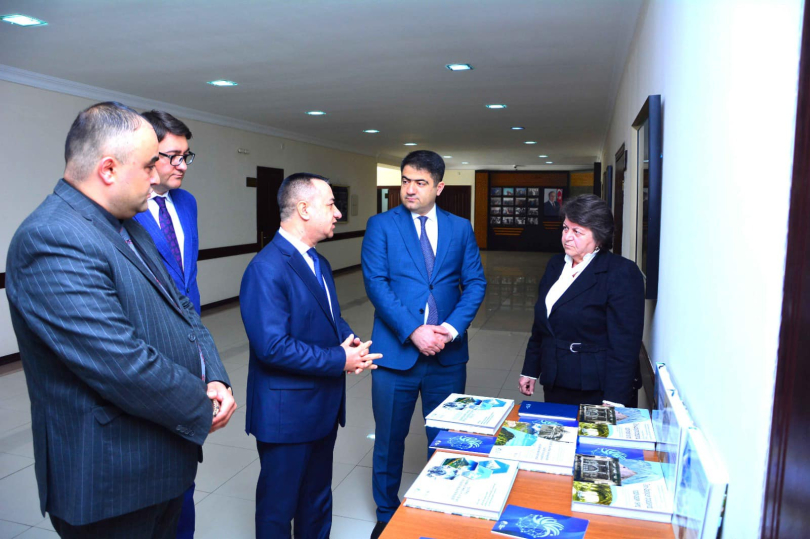Aghstafa Hosts Scientific Conference and Book Presentation on the Cultural Heritage of Western Azerbaijan
 14.04.2025
14.04.2025


 14.04.2025
14.04.2025


A scientific and practical conference titled “On the Path to Return to Western Azerbaijan” was held in the town of Aghstafa, co-organized by the Aghstafa Executive Authority and the Social Research Center (SRC).

As part of the event, the public was also introduced to a three-volume publication by the SRC titled “Return: Our Material and Cultural Heritage in Western Azerbaijan.”
Opening the conference, Head of the Aghstafa District Executive Authority, Seymur Orujov, highlighted the significance of the peaceful return concept to Western Azerbaijan. He emphasized that Azerbaijan’s growing influence on the global stage is reshaping international standards of justice. Orujov also stressed the importance of continuing such events in collaboration with the SRC and noted the value of organizing roundtable discussions based on the Center’s sociological research.
Next, Tural Ismayilov, Sector Head and analyst at the Social Research Center, delivered a detailed presentation on the Center’s work. He emphasized that its activities are guided by the strategic vision set forth by President Ilham Aliyev. In response to the call to establish an ideological, political, and scholarly foundation for the return to Western Azerbaijan, the Center launched a comprehensive study of the region’s material and cultural heritage from both historical and academic perspectives.
As a result of extensive and meticulous research, the Center published the following volumes: the first, “Our Material and Cultural Heritage in the Historical Lands of Azerbaijan,” was released on July 4, 2022. The second, “Return to Western Azerbaijan: Our Heritage in the Historical Lands,” was published on November 6, 2023. Today’s event marked the presentation of the third volume, “Return: Our Material and Cultural Heritage in Western Azerbaijan,” continuing the Center’s institutional project in this field.
Aziz Alibeyli, Head of Department at the SRC, expressed his gratitude to the Aghstafa community for their keen interest in the event. He noted that the third volume presented at the conference explores the historical and cultural heritage of Azerbaijanis who were forced to leave their ancestral lands in regions such as Irevan, Goycha, and Zangazur, and who now reside within the borders of modern-day Azerbaijan. Like the previous volumes, this book draws on sources from both state and private archives across Türkiye, Russia, Georgia, Iran, and several European countries. The aim of the project is not only to document the scale and statistics of the destruction of Azerbaijani cultural heritage in present-day Armenia, but also to recover the memory, mythology, beliefs, and oral histories tied to these monuments—ultimately seeking to revive the nation’s historical consciousness.
The book’s author, SRC Sector Head, Afgan Valiyev, shared that 532 heritage sites in Western Azerbaijan were studied during the research. The third volume offers detailed information on 144 monuments grouped into 20 categories. These include: 21 pilgrimage sites (pirs, ojags, and shrines), 6 mosques, 12 gravestones, 7 sarcophagus tombs, 21 temples, 16 fortresses, 5 caravanserais, 4 mausoleums, 2 domes, 2 underground burial vaults, 3 ethnographic-archaeological sites, 10 tomb sculptures, 4 archaeological sites, 2 bridges, 5 inscribed stone plaques, 2 madrasas, 2 religious schools, 2 residential quarters, 14 petroglyphs and ancient settlements, and 4 basilicas. Of these, 32 monuments were found to be completely destroyed, 42 are in ruins, and 70 have been appropriated. The event concluded with a Q&A session where attendees had the opportunity to engage directly with the speakers.